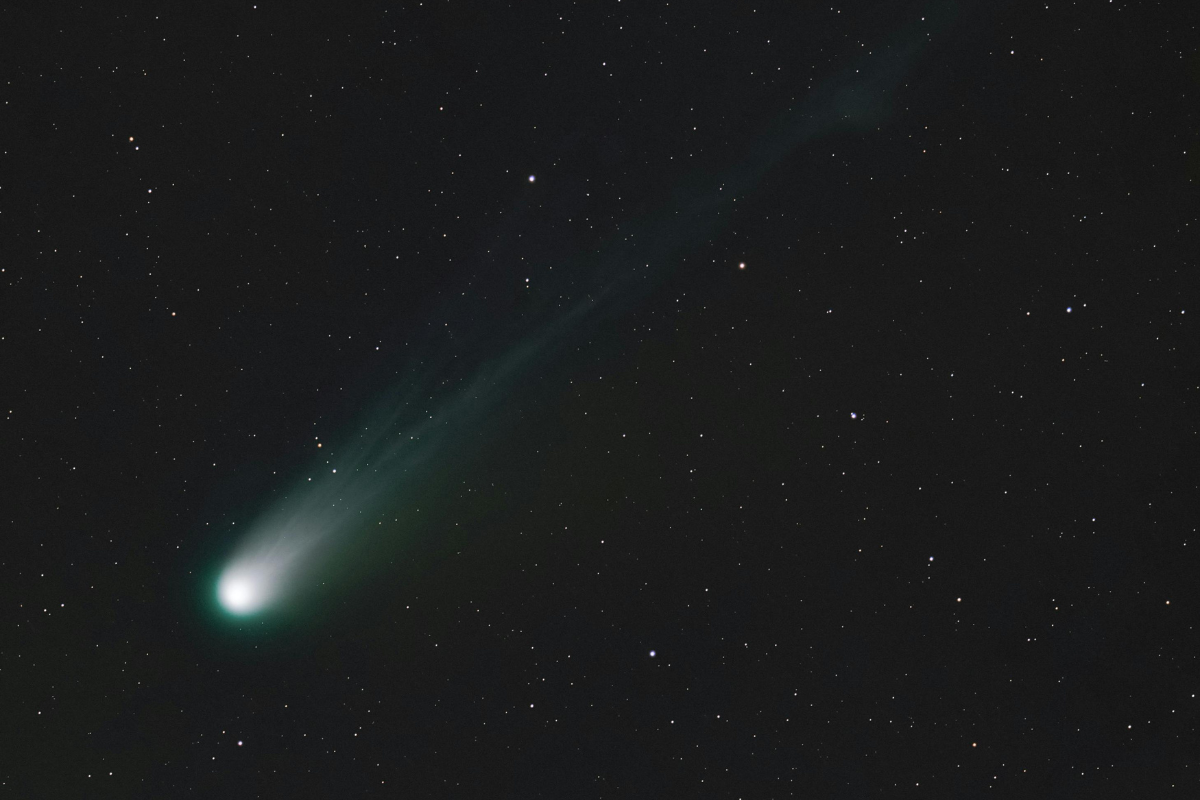Science
Scientists Investigate Quasi-Moon as Possible Alien Probe

A newly identified object, designated 2025 PN7, is igniting significant interest among scientists and the public. This “quasi-moon” has been temporarily captured by Earth’s gravity, orbiting our planet. However, Harvard professor Avi Loeb proposes a more provocative theory: he suggests it may be an artificial probe sent by an advanced civilization.
Loeb’s hypothesis is based on a striking observation. He emphasizes that humanity’s recorded history, approximately 8,000 years, is negligible compared to the 13.8 billion years that the Milky Way has existed. This vast timespan suggests that other intelligent life forms could have evolved long before humans emerged. He believes that numerous interstellar objects, such as 2025 PN7, might have traversed our Solar System unnoticed throughout history.
Advanced Civilizations and Cosmic Surveillance
According to Loeb, these advanced civilizations may perceive humans as a “baby civilization.” Instead of initiating direct contact, they could be monitoring us from a safe distance. He theorizes that they might have deployed observation devices within our cosmic vicinity to keep track of emerging species. The recently discovered 2025 PN7 is now among the leading candidates for one of these theoretical probes.
The object was first detected on August 29, 2025, by scientists at the Pan-STARRS Observatory in Hawaii. It is estimated to have been in orbit around Earth for around 60 years and is expected to remain for another 60 years. Described as “roughly the size of a small office building,” 2025 PN7 is too small to influence Earth’s tides or other significant effects. While many scientists consider it a temporary asteroid, Loeb insists that only thorough analysis can reveal its true nature.
Tracking Interstellar Visitors
Loeb’s investigation coincides with another rare visitor to our Solar System. NASA is currently monitoring Comet 3I/ATLAS, the third known object to originate from interstellar space. Discovered on July 1, 2025, by the ATLAS survey in Chile, this comet poses no threat to Earth. At its closest approach, it will pass at a distance of approximately 170 million miles and is expected to reach its closest point to the Sun around October 30, 2025, moving just inside the orbit of Mars.
Comet 3I/ATLAS follows the earlier discoveries of ‘Oumuamua in 2017 and 2I/Borisov in 2019. Based on observations from NASA’s Hubble Space Telescope, astronomers estimate that the comet’s nucleus measures between 1,444 feet and 3.5 miles in diameter. The frequent arrival of such interstellar objects supports Loeb’s central argument that many have passed through our Solar System unnoticed throughout human history.
While NASA missions, including the Hubble and Webb telescopes, are studying Comet 3I/ATLAS, a diverse array of instruments is also directed at this visitor. These include the Perseverance and Curiosity rovers on Mars, the Lucy and Psyche missions, and the Parker Solar Probe, among others. Meanwhile, Loeb is concentrating on the object closer to home. He aims to determine whether 2025 PN7 is a natural rock or evidence that we are being observed.
As the exploration of our cosmic neighborhood continues, the debate over the existence of advanced civilizations—and their potential interest in humanity—remains lively. The discovery of 2025 PN7 and the tracking of Comet 3I/ATLAS may be just the beginning of a broader inquiry into our place in the universe.
-

 Health3 months ago
Health3 months agoNeurologist Warns Excessive Use of Supplements Can Harm Brain
-

 Health3 months ago
Health3 months agoFiona Phillips’ Husband Shares Heartfelt Update on Her Alzheimer’s Journey
-

 Science1 month ago
Science1 month agoBrian Cox Addresses Claims of Alien Probe in 3I/ATLAS Discovery
-

 Science1 month ago
Science1 month agoNASA Investigates Unusual Comet 3I/ATLAS; New Findings Emerge
-

 Science4 weeks ago
Science4 weeks agoScientists Examine 3I/ATLAS: Alien Artifact or Cosmic Oddity?
-

 Entertainment4 months ago
Entertainment4 months agoKerry Katona Discusses Future Baby Plans and Brian McFadden’s Wedding
-

 Science4 weeks ago
Science4 weeks agoNASA Investigates Speedy Object 3I/ATLAS, Sparking Speculation
-

 Entertainment4 months ago
Entertainment4 months agoEmmerdale Faces Tension as Dylan and April’s Lives Hang in the Balance
-

 World3 months ago
World3 months agoCole Palmer’s Cryptic Message to Kobbie Mainoo Following Loan Talks
-

 Science4 weeks ago
Science4 weeks agoNASA Scientists Explore Origins of 3I/ATLAS, a Fast-Moving Visitor
-

 Entertainment4 months ago
Entertainment4 months agoLove Island Star Toni Laite’s Mother Expresses Disappointment Over Coupling Decision
-

 Entertainment3 months ago
Entertainment3 months agoMajor Cast Changes at Coronation Street: Exits and Returns in 2025









